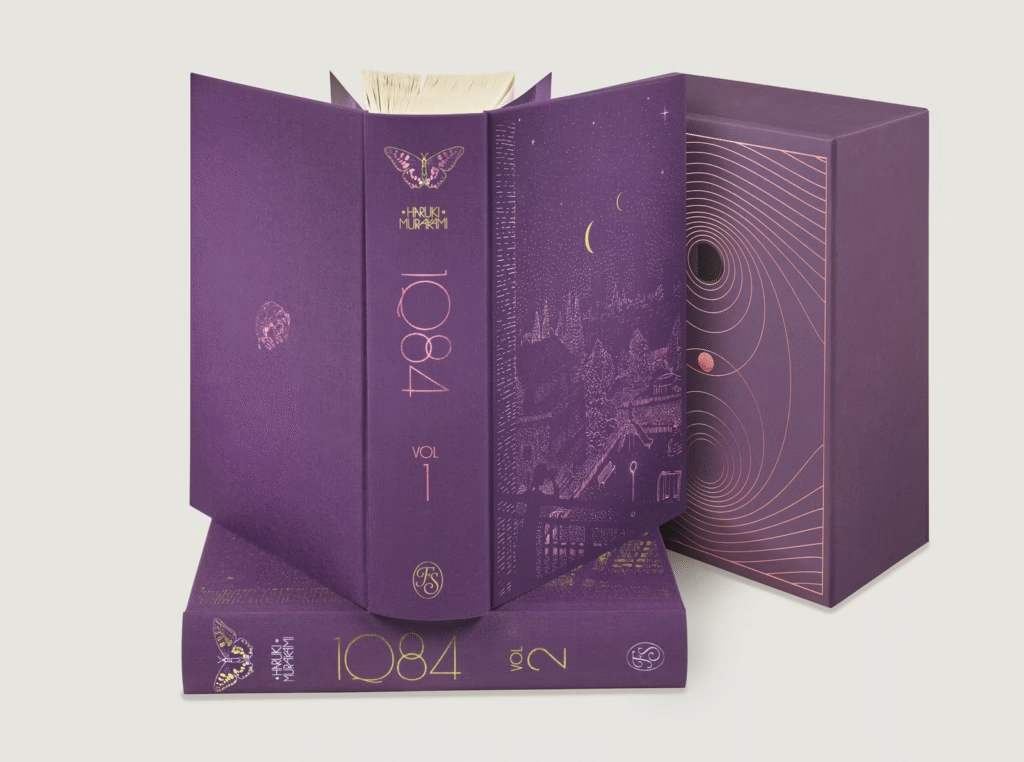With The Folio Society’s release of Haruki Murakami’s 1Q84 out now, readers will be able to experience the modern classic with a new physical edition and illustrations from Daniel Liévano. We were able to talk with Liévano regarding the illustration and time with The Folio Society.

Miso: Thanks for taking some time to answer some questions about the illustrated edition! First off, what inspired you to help create this illustrated edition of 1Q84?
Daniel Liévano: What inspired me, particularly from the book 1Q84, was the use of textures. Literally, textures. For a few years now, I’ve been incorporating collage into my illustrations. But more than collage, I mean the use of images from other universes which, when subtly blended with my drawing, give birth to an entirely new universe. This book, in particular, speaks of parallel worlds, and it seemed conceptually fitting to use collage not as a technique, but as a resource that fosters abstraction and play.
You also illustrated The Folio Edition of A Wild Sheep Chase. How do the illustrations of that work compare to the ones you did for 1Q84?
The Goldilocks zone between the visual concept of a Murakami book and any other of his works, I believe, lies in whim. This may sound disruptive, but at its core it is not. Murakami, in these two books and in others I’ve had the opportunity to illustrate, plays constantly with seemingly disconnected elements that he later, at his own free will, decides to connect—almost like a puzzle. I think visually it should be the same: fragmented images filled with other images, almost like a meta-image, if we could call it that.

This is the first version of 1Q84 that has accompanying illustrations. What is the most difficult challenge in visually translating a novel into complementary artwork?
The hardest part of creating a visual translation of a book like 1Q84, I think, is swimming against the current of editorial illustration in science fiction or fantasy. Readers of these genres, probably accustomed to hyperrealist and technological imagery, may expect similar visuals. But to me, in this book—and in Murakami’s work in general—the beauty does not lie in objects or in the human figures of the characters. On the contrary, I believe it resides in the ethereal, the abstract, the unseen. And that gives me the freedom to play, in my own way, with the visualization of those things that have no intrinsic image.
Were there any challenges aligning with an international team to create this new edition?
Fortunately, there were no complications with the Folio Society team. The first difficulties arose, as was to be expected, with the first book, when we were just defining the graphic line and visual tone of what would become a long-term project: six books over five years.
What advice could you give an artist trying to break into the industry?
You are not a draftsman, you are a thinker. If you are good, your clients won’t want your drawing skill—they’ll want your ability to make decisions.
Finally, what are some ways our readers can find you.
My name, Daniel Liévano, or my website life is an illusion dot com.
You can follow Liévano on Instagram and the artist’s website. The Folio Society’s release of 1Q84 is now available through their website. Stay tuned for more news and interviews here on Miso!

